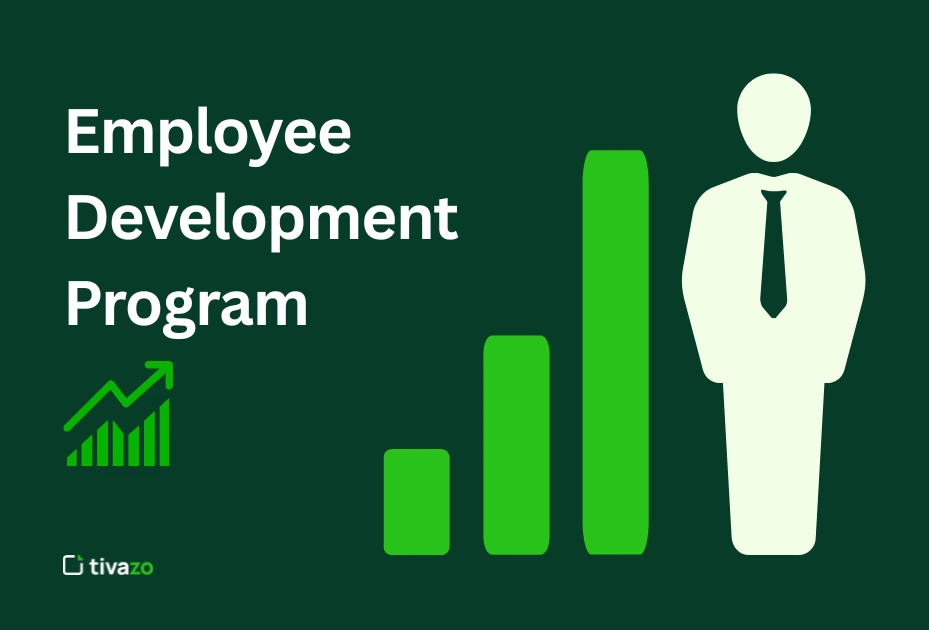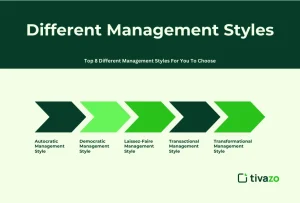In today’s fast-paced and competitive business world, the prosperity of any business depends to a great extent on its employees. Employees continuously learning new things, growing, and improving their skills become the pillars of high-performing companies. That is where an effectively functioning employee development program comes in. Far more than a standard corporate perk, it’s a strategic investment in your employees that drives retention, performance, and overall business development.
This blog will walk you through 9 proven strategies that can make your employee development program a force to reckon with for productivity and efficiency. In case you are developing your development plan or even attempting to revamp the existing one, these actionable strategies will be a roadmap to success.
Key Takeaways:
- What Is an Employee Development Program?
- Why Employee Development Programs Matter
- Proven Strategies for a Successful Employee Development Program
- Common Mistakes to Avoid in Employee Development Programs
- Tips for Long-Term Growth
- Elevate Your Team: Time to Take Action
What Is an Employee Development Program?

An employee development program is a purposeful and structured plan designed to help employees improve their skills, learn new knowledge, and grow professionally within an organization. It combines various learning methods such as formal training programs, mentoring, on-the-job experiences, and leadership tracks to develop a more skilled and dedicated workforce.
These programs are directly linked to the total vision and goals of the organization such that employee development at the individual level also leads directly to organizational behavior and success. Unlike short-term or ad hoc training programs, a real employee development program is ongoing, goal-focused, and performance-linked.
Key Elements:
- Skills Training (Technical and Soft Skills): This part encompasses the technical skills that are of a profession (such as software training or compliance procedures) and also the soft skills (such as communication, problem-solving, and teamwork) that are fundamental to all roles.
- Mentorship and Coaching: Getting wise mentors or coaches brings employees in with the chance to have real-life industry knowledge, life-long advice, and be guided, which all lead to the acceleration of their development.
- Career Path Planning: Staff members are at an advantage when they have their potential career path in the organization. Mapping possible progression paths keeps the momentum and direction going.
- Feedback and Performance Monitoring: Regular feedback meetings and performance reports ensure monitoring progress and adjusting the development plan as and when required, thus goals are attained in the best manner possible.
If well implemented, an employee development program leads to a more skilled, motivated, and committed workforce that’s geared to drive sustained business success.
Why Employee Development Programs Matter

A worker development program is not a matter of education itself—it is a strategic long-term initiative with benefits for both employers and employees.
1. Improves Retention:
When workers notice obvious opportunities for advancement, they’ll be more inclined to remain. Indeed, LinkedIn says that 94% of employees would stick around longer if organizations invested in learning.
2. Boosts Performance:
Trained employees are productive, efficient, and creative. Training guarantees that they are well versed in the current industry trends as well as technology.
3. Enhances Culture:
Developmental organizations inculcate a culture of growth and ongoing development.
4. Reduces Costs:
Turnover is expensive. Development programs reduce the necessity for expensive hiring by enabling internal mobility.
5. Boosts Customer Satisfaction:
Confident and efficient personnel provide improved service, thus greater satisfied customers.
According to the Association for Talent Development (ATD), companies offering comprehensive training programs have 218% higher income per employee than those with less extensive training.
An effective employee development program is the cornerstone of a strong and future-proofed workforce.
9 Proven Strategies for a Successful Employee Development Program
It takes more than good intention to build an employee development program that works—it takes a well-defined, strategic plan. To assist you in creating or remodeling your program with success, we’ve put together nine tested strategies that address each of the essential components. These realistic approaches, ranging from analyzing skills gaps to rewarding accomplishments, will lead you through the steps of creating a program that not only grows your employees but also strongly supports the objectives of your organization. Let us get into it and understand how to make your employee training programs a real success.

1. Perform Skill Gap Analysis
Prior to designing any employee development program, you need to determine where your employees are at presently.
- Why It Matters:
- Identifies where you need training most
- Saves time and money on irrelevant training
- Aligns company goals with learning goals
- How to Do It:
- Utilize performance reviews, surveys, and feedback from managers
- Identify existing abilities versus future abilities required
- Utilize assessment software and tools
After gaps are determined, you can shape the program accordingly, rendering it more efficient and productive.
2. Establish Specific and Personal Development Objectives
Directionless development leads nowhere. Goals give a map to the employee and the company.
- Best Practices:
- Apply the SMART model: Specific, Measurable, Achievable, Relevant, Time-bound
- Align company requirements with personal objectives
- Review and revise quarterly goals
Example: If the employee wants to transition into a managerial position, a development goal example could be: “Take a leadership development course and mentor one junior staff member within the next 6 months.”
Individual goals make your employee growth program applicable and interesting.
3. Develop Customized Training Modules
One-size-fits-all does not work in the case of professional development.
- Training Options:
- Webinars and online courses
- Face-to-face workshops
- Job shadowing
- Certifications and continuing education
- Tips:
- Cater to various learning styles (visual, auditory, tactile)
- Mix formal and informal learning
- Integrate learning into daily workflows
When training is personalized, employees learn more and learn it more effectively—making your employee development program far more effective.
4. Promote Ongoing Learning
Training should not end after onboarding. Foster a culture of continuous improvement.
- How to Foster Ongoing Learning:
- Allocate learning hours every month
- Offer access to learning websites such as Coursera or LinkedIn
- Reward those who pass training
Make learning a habit, not a task. Culture of ongoing development is the key to an active employee development program.
5. Implement Mentorship & Coaching
Learning from peers and leaders accelerates growth like nothing else.
- Advantages:
- Promotes trust and enhances team unity
- Develops leadership qualities in mentors
- Offers individualized advice to mentees
- How to Set It Up:
- Pair workers with experienced mentors
- Establish expectations and deadlines
- Schedule regular check-ins
Mentorship turns your employee development program into a team effort.
6. Provide Leadership Development Tracks
Future leaders are required by all organizations. It is smarter and more sustainable to develop them internally.
- Steps to Implement:
- Identify high-potential employees
- Offer leadership development and mentoring
- Provide them stretch assignments or guide small projects
Leadership pipelines position your future generation of managers and reinforce your employee development program.
7. Offer Cross-Training Opportunities
Cross-training enhances flexibility and team cohesiveness.
- Advantages:
- Promotes team flexibility
- Increases awareness of different roles
- Assists in filling vacancies or turnover
- Execution:
- Temporarily swap job roles
- Promote group work
- Host cross-functional team workshops
Cross-training revitalizes your employee development program by the expansion of employee skillsets.
8. Reward and Recognize Progress
Reward stimulates motivation and re-enforces learning behavior.
- Ideas:
- Certification ceremonies
- Performance incentives
- Public recognition (newsletters, meetings)
- Why It Works:
- Keeps employees motivated
- Highlights value of the program
- Encourages peers to participate
When success is seen, your employee development program builds momentum and credibility.
9. Evaluate and Improve Continuously
An effective employee development program is never static.
- How to Evaluate:
- Seek feedback through surveys
- Track performance metrics (pre vs. post training)
- Conduct post-training tests
- Optimization Tips:
- Eliminate inadequate training
- Obtain new, hot skills
- Upgrade tools and platforms
Ongoing improvement ensures your program is up-to-date with changing needs and expectations.
Common Mistakes to Avoid in Employee Development Programs

Even the most carefully made plans sometimes go awry. Following are typical pitfalls to look out for in any employee development plan:
1. Overcommitting Resources
You cannot do all at once, and attempting to do so will drain your training and HR organizations. Prioritize by impact and resources to make ongoing progress that is sustainable.
2. Inadequate Communication
If workers are unaware of the program’s purpose or benefit, participation and involvement will falter. Utilize clear, concise messaging and feedback mechanisms.
3. Failing to Manage Risk
Staff turnover, technological turnover, or budget shifts can compromise training timelines. Constantly monitor for potential threats and create counteractions.
4. No Contingency Plans
Make provision for training calendars, backup facilitators, and other material. Flexibility is the key to ongoing program running.
5. No Documentation
Without documentation, achievement cannot be monitored. Record learning objectives, training attendance, feedback, and improvements in performance to ensure long-term success.
Avoidance of these traps makes your employee development program more effective and believable.
Final Tips for Long-Term Growth

Before we part ways, a few helpful suggestions on how to keep your employee development program going:
- Check Deadlines and Goals Weekly: Set aside a standard time slot each week to monitor the pace of developments and plan accordingly.
- Know How to Say No to Excessive Requests: Too much of development with excessive deadlines can backfire. Be tactical and honest in making commitments.
- Celebrate Every Milestone: Recognize achievement with small celebrations, certificates, or shout-outs. It raises morale and maintains positive behavior.
- Train the Trainers and Managers: Ensure that individuals involved in implementing development are adequately prepared with the right tools and insight. Their support is critical to employee success.
- Avoid Multitasking: Employees learn more from focused group development sessions. Reduce distractions and create space for quality development time.
These final practices will embed your commitment to continuous improvement and make sure your employee development program is sustainable in the future and helps in organizational economical growth.
Elevate Your Team: Time to Take Action
Creating a successful employee development program is not a one-time task. It’s a continuous process that includes evolving with the needs of your staff, industry trends, and company goals. Think of it as an investment with enough time to keep experiencing dividends in the form of employee performance, retention, and business growth.
The nine strategies defined here are not meant to overwhelm but to empower. You don’t have to do them all simultaneously. Instead, determine where your organization is now, tackle the greatest needs first, and begin with one or two that will have the greatest impact. Perhaps if leadership development is the gap, begin there. If you have skills gaps, begin with assessments.
Each and every step counts towards a larger cultural shift toward continuous betterment. Those efforts accumulate over the years, creating a team that’s not only trained—but completely enabled to deliver at its best.
By doing just one thing today, you’re positioning yourself for success down the line. The reality is: awesome organizations are built by awesome people—and awesome people are constructed, not just hired.




